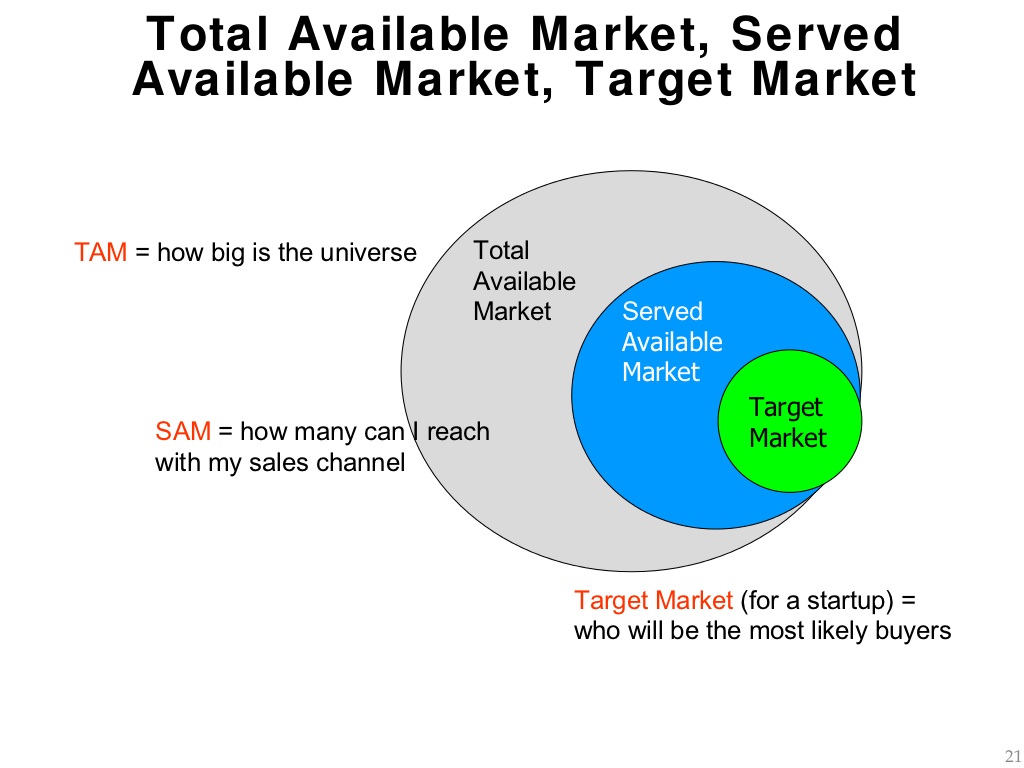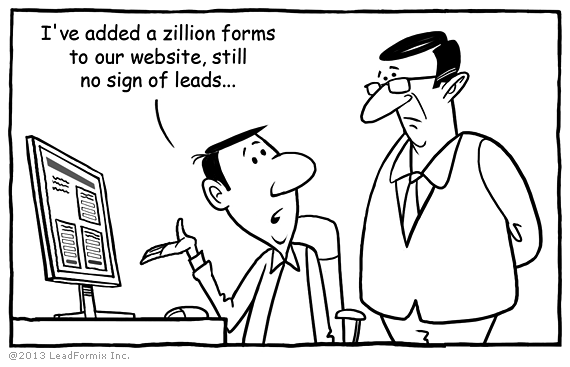
ICP + TAM = A Sales Qualified Lead Machine
In the modern world of Sales Development, high quality and high velocity Sales Qualified Leads reign supreme. We find ourselves in a new era of Outbound. Sales Development teams are transforming from Clark Kent’s (suits in a phone booth) to Iron Man’s (suits full of high-tech accessories).
Never before in the history of sales have we really had this big of an advantage.
But listen, it’s not just because the technology is being built for us. Or because data is cheaper and more accessible than ever before. Or because there’s a whole new level of transparency to it. Or because we have unique ways, like social media, to get in front of buyers. No. All of that is awesome, but without knowledge and know-how, it’s just clutter and spam.
So that leads me to the focus of today’s knowledge bomb which is: qualifying leads.
Here are the four most important tactics to build a sales qualified lead (SQL) machine:
- Find your Ideal Customer Profile (ICP)
- Define your Total Addressable Market (TAM)
- Enrich your customers
- Meet your future customers
Now let me tell you about the traditional, 1.0 way people qualified leads in the past.
Step 1 – Buy a list (non-exclusive, so a ton of other people are calling it) and likely unqualified other than the fact that they are a business.
Step 2 – Call these people. One by one. Maybe email them a canned message. Both basically spam.
Step 3 – IF you get a hold of someone, ask for more of their time. (Usually in a call/second call, which they’ll likely duck because they just wanted to get off the phone with you the first time and felt uncomfortable saying no).
Step 4 – You call over and over. Maybe send a few emails.
Step 5 – Realize you’ve wasted a ton of time and move on.
Now if you’re 2.0, maybe you’ve done this and added some automated emails and social media in there. But you’re still missing the big picture. Because whether you buy, build, or pull a pretty little list out of your…office drawer, without defining you ICP and your TAM correctly, you’ll just waste time; and time is the most valuable resource for a salesperson.
So why are you here? You’re here because you don’t have a true grasp on your customer profile, and you don’t know who the best people to contact are. This leads us to two very important concepts.
- ICP – aka your Ideal Customer Profile
- TAM – aka your Total Addressable Market
Here’s how you can use your ICP and your TAM to build leads lists that are pre-qualified, saving you tons of time on those pesky qualification call questions that will likely result in a disgruntled and disengaged prospect.
Finding Your Ideal Customer Profile (ICP)
The ICP is broken into two parts: Company and Job Title. This can be broken out even further as you get more advanced for Company Size or Industry.
For example, your target buyer at a 200-person company is the VP of Marketing, but at a 2000-person company, it’s the Digital Marketing Manager. As organizations grow, they hire out for more focused roles.
The better you can target and more granular you can get with your ICP, the more successful your Outbound Campaigns will be.
Here are a few questions to ask yourself when trying to identify your Ideal Customer Profile:
What products are my customers using that I compete with, complement, or that might translate to interest in my product?
- E.g., if you have a Mailchimp-style service, you want to speak to Mailchimp customers.
- E.g., if potential customers are running Facebook Ads, they might also be interested in Ad Optimization or Analytics software.
Where are these people living on the web?
- E.g., someone interested in your e-commerce service might have a store hosted on Shopify or built with Magento because these services are built to host online vendors.
- E.g., if you want to find people to create video courses online, go find people who have already created content on the subject in written or audio form and are selling it on Amazon. Then convince them to try video content.
What do I consider my low-hanging fruit?
- These are the people already doing what you want them to do, just somewhere else.
- E.g., An individual who is buying or selling a service on Craigslist that your company provides. It’s easier to get the person to use you over Craigslist than to create a new buyer/seller from scratch. Pinterest has emerged as another way to source potential customers that are already playing ball.
- E.g., you’re going after their budget focused on ad spend and you see that a potential buyer has a testimonial on a competing company’s website. You know they have budget and are already spending it somewhere else. Time to go get your slice or even the whole pie!
What can I decipher from my previous closed deals that I can use in new ones?
- You keep closing deals with companies, so take a moment to ask yourself, what do these companies have in common and how can I apply this when speaking to companies with the same common variables?
Once you’ve figured this out, you’ll want to build massive lists of these companies.
Here are some good places to look to start building lists of your ICPs:
- LinkedIn and Facebook groups
- Meetups
- Industry conference websites
- Trade association forums and directories
- Job boards such as Indeed, LinkedIn, etc.
- Public Legal Filings
- CrunchBase
- AngelList
- Glassdoor
- Yelp
- Shopify
- Etsy
- Kickstarter
- Any company database or marketplace
There are plenty of databases out there for you to use to inquire about these companies and find even more information! Things to look for might include:
- Amount of money raised to date (for startups)
- Timing of last round raised (for startups)
- Employee headcount
- New employees recently added
- Job titles and new titles added
- Company headquarters
- PR announcements, such as product, funding, key hires, or partnerships
- Legal filings
For more actionable insights to build your Ideal Customer Profile, check out the book Hacking Sales.
Now What?
Sounds cool, huh? But we’re not at the finish line yet. Use your ICP to build targeted lists that you know will convert because you know it’s the right person, at the right company, that almost certainly has budget at that moment. Once you have a clear sense of your ICP, it’s time to work out how to define your total universe of potential accounts.
Defining Your Total Addressable Market (TAM)

Enrich your Customers
Your customers chose to partner with you for a reason. Tapping into the commonalities across your customer base will leverage enormous value and build a more complete picture of your customer.
Once you understand the profile of your customer, you can determine how deep the market is for companies with a similar background. Moreover, taking a step back and looking at the customer base will inform you of outlying trends that could support a move into a new industry or market segment.
Map your customer base, using a tiered data framework:
Tier 1: Sales Cycle, Average Contract Value (ACV), Win Rate
The goal of this tier is to understand the sales velocity (i.e. the number of opportunities multiplied by the ACV multiplied by the win rate divided by the sales cycle) of your customer base.
- These data points will form the basic foundation and expose any outliers in the customer data
- Invest time to validate your data integrity
Tier 2: Industry (and Vertical), Employee Size, Growth Score, Location, and Technology Stack
The goal of this tier is adding an additional layer of firmographic data that will form the basis for your size and scope analysis.
- There are a number of large data sources to validate Industry, Vertical, Employee Size, Growth Score, and Location including: Mattermark, FactSet, and Hoovers. When evaluating your potential database partner, the following criteria will help to guide the choice:
– Matching percentage (i.e. number of your customers that are present in their list)
– Number of additional data (commonalities) points
– Data integrity – check third party sources to validate
- Industry and Vertical are interdependent (and often confused). An example of the relationship (Box is in the Cloud Storage vertical within the Technology Industry)
- If your customers have adopted a set of technologies, surfacing this data at scale will provide an additional proxy. For the Technology Stack, there are several sources to capture this data: Datanyze, Ghostery Enterprise, BuiltWith, and SimilarWeb. Using these providers you can determine if your customers are using Website Analytics, Marketing Automation, PPC advertising, A/B Testing, etc.
Tier 3: Company specific data
- Using freelancers (Upwork, CrowdFlower, etc.) you can add valuable data from competitors websites, the AppExchange, or any website. If you have a hypothesis that you’d like to test (e.g. your buyer is a VP of Marketing), you can have the freelancers do a pass against your customer list via LinkedIn.
- The scope of this collection is broad, so identify a few hypotheses and you can validate them from your Tier 1 data points
Meet Your Future Customers
Once you’ve collected extensive data on your existing customers, it’s time to flip the magnifying glass onto your future customers. Assuming you invested in one of the databases mentioned earlier, this process will be fairly straightforward.

This next set of steps will draw on your customer list and extrapolate the data across the dataset of your database partner.
Step 1: Map your customer data
- Using Excel, create a datasheet for each Tier
- Form a consistent list of your customers across each sheet
- Cluster (and sort) the companies with high concentration across each variable – specifically those that perform well across the Tier 1 data points
Step 2: Identify the Early Adopters and Mainstream (see Crossing the Chasm)
Place your customers into two buckets:
- High number of variables and high performing characteristics from Tier 1
– This list will surface companies that are early adopters and have a faster than average sales velocity
- Outside your (assumed) ICP but possess high performing characteristics from Tier 1
– This list will provide companies that have a faster than average sales velocity, however may not be in your present ICP.
Step 3: Validate the size and scope
- Based on your two customer sets, use the confirmed variables to export companies from the largest database available for your given Industry and set of Verticals
- Separate the two distinct buckets (from Step 2) to ensure you can test performance
Make It Actionable
Now you’ve collected all this data – what do you do with it? Empower the Sales team with the same insight you’ve collected.

Step 1: Confirm the variables
When you check the weather, are you interested in the barometric pressure? Probably not, so applying the same logic for the fields you expose. The goal in this step is to understand the optimal information that can be effectively positioned to personalize their outreach.
- Take a holistic approach to how the team can use this data
– Industry/Vertical will align future customers (see Geoffrey Moore: bowling pin strategy)
– Geographical concentration adds degrees of separation and can be valuable for marketing events
– Technology providers will allow easy dynamic fields within emails
– Competitive takeaways will give great talking points
- Limit the variables to 4-5 (to avoid paralysis by analysis)
- Choose your filters (for the Dashboard) so that you have overarching segmentation
Step 2: Create custom fields within the CRM
Add a collection of custom fields and be particular about how you present the data (i.e. on the Account record and/or Contact record). This will involve using a feedback loop with the Sales team around what they would find valuable – specific to the sales process.
Step 3: Mapping the fields to reports in Salesforce
In this section, you want to think about the optimal method for presenting the data so that 1) the Sales team can quickly interpret the chart and 2) you are telling a story with each data point.
My advice for this section is use a combination of different charts, and leverage feedback from the Sales team on how they interpret each report. The longer it takes for individuals to understand the context of the report, the less valuable the report.
Refine & Optimize the Entire Process
Finding your ICP will ensure you’re having the right conversations. Defining your TAM will uncover the breadth and depth of your market. The two exercises are not designed to be set-and-forget. As your customer evolves and you test your outliers, you’ll need to tweak and adjust the model.
In order to create and maintain this process you should have a qualitative feedback loop from your Customer Success/Account Management team; and a quantitative feedback loop to continually improve the ICP and TAM.
This is a guest post by Max Altschuler, the CEO of SalesHacker.com and Daniel Barber of Datanyze.

